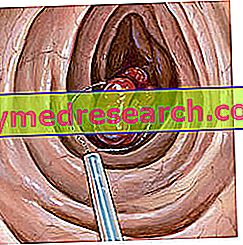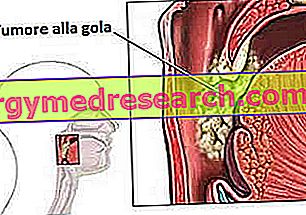Polypectomy is a medical procedure aimed at removing the polyps that can form in any part of the digestive tract, including the colon, the most frequent site on which we will focus in the course of the article. Today, in most cases, polypectomy occurs endoscopically, often already during an exploratory colonoscopy. The alternative to this technique is open abdomen surgery.
Why undergo polypectomy?
Intestinal polyps are soft protuberances that form on the mucosa of the intestine, especially in the colon and rectum. Particularly frequent after the age of 50, some of these polyps, called adenomas, can go against a slow (generally 5-10 years) but inexorable malignant evolution, or otherwise cause various problems such as bleeding or intestinal obstruction.
It is now established that most malignant tumors of the intestine are derived from polyps. The chances of a polyp turning into a malignant tumor can be quantified based on the characteristics of the polyp itself, observed during colonoscopy; if these characteristics require their removal, the doctor may decide to carry it out immediately, without the need to repeat the endoscopic survey again.
The choice to immediately or not carry out the operations of polypectomy is influenced by the characteristics of the polyp and those of the patient, which together allow to quantify the risk of bleeding. If this appears to be concrete, the patient will be invited to undergo polypectomy in a subsequent session.
Execution of the examination
The polypectomy procedure usually takes place under the Day Hospital regime, subject to a limited number of laboratory tests and the implementation of a series of rules that we will analyze in detail in the next chapter.

Just like during a normal exploratory colonoscopy, the instrument (the colonoscope) is introduced through the anus and, if possible, can be traced back to the ileocecal valve and / or to the last ileal loops.
In order to relax the intestinal walls and facilitate the visual examination, through the colonoscope air is introduced into the colon, air that may cause some discomfort even at the end of the examination. The insufflation of air, in particular, can give rise to swelling and painful tension in the abdomen, in addition to producing a feeling of need to evacuate.
Once the polyp to be removed has been identified, the technique generally involves the recession at the base of the peduncle, thanks to the aid of a particular electrosurgical in the shape of a loop. Through this instrument, capable of throttling the polyp at the base, electric impulses are transmitted which cut and coagulate the tissue at the same time, thus favoring the arrest of hemorrhage. Once cut, if possible, the polyp is recovered for histological examination.
Not all polyps are pedunculated; sessile ones, for example, are completely adhered to the bowel wall and in this case it may be necessary to detach them piece by piece, thus repeating colonoscopy on several occasions. When the polyp is very large or does not have a peduncle, the doctor may decide to inject at the base of the polyp a vasoconstrictor drug, such as adrenaline, which reduces the risk of bleeding. At the removal site can also be practiced an injection of India ink diluted with physiological solution (tattoo), to facilitate subsequent endoscopic checks and / or surgery.
Regardless of the polypectomy technique adopted, after removal, the entire polyp or its fragments are - if possible - recovered and sent to the laboratory for histological analysis; by examining the characteristics of the polyp, the pathologist can thus determine whether further checks and / or interventions will be necessary or not. In a fortunately limited number of cases, for example, it may happen that the examination reveals the presence of tumor cells at the base of the polyp or peduncle; in this case the polypectomy cannot be considered conclusive and a surgical intervention may be necessary to remove the tract of colon where the polyp was located. Alternatively, the so-called mucosectomy - submucosal dissection, a technique which together with the polyps allows the removal of the inner mucous layer of the intestinal wall - can already be practiced during the first poipectomic operation. In this case, if the malignant lesions are confined within the mucous layer of the bowel wall, the mucosectomy can be considered decisive.
Is polypectomy a safe exam? Are there risks and complications?
Like all invasive procedures, polypectomy is also burdened with risks and complications. The most important, as anticipated, concern possible hemorrhagic outcomes, which occur in up to three cases out of 100 and which fortunately in most cases limit themselves or are arrested endoscopically. Only in rare circumstances can blood loss take such a course that it may require blood transfusion or surgery. This is more likely in the case of sessile polyps (without peduncles) or large ones (> 2 cm).
Another complication of polypectomy, relatively frequent, is the perforation of the intestinal wall, which occurs in 0.3-0.4% of cases; this complication can be controlled with the suspension of food associated with antibiotics, while in more serious cases it may require immediate surgery. The risk of peritonitis, noticeably limited by antibiotic prophylaxis, is also fearsome.
Sedation may induce dizziness, nausea and exhaustion, which usually ceases spontaneously within a few hours.
After the treatment, which lasts from 15 to 90 minutes, many patients complain of problems with abdominal swelling, which can persist for a few hours during which they tend to reduce spontaneously; if this does not occur the evacuation of the gases can be favored by the insertion of a rectal probe (a small tube in the anus).
Mucosectomy is burdened with the same possible complications as polypectomy, but with a higher incidence.
Preparation for polypectomy intervention
The preparation for polypectomy is similar to that already seen for colonoscopy, to which we refer for more details. Briefly, starting from the 3/4 days preceding the exam, the person is invited to follow a diet free of dairy products and waste (no vegetables and fruits of any kind should be consumed).
Before the exam it is necessary to practice a fast of at least 6 hours, to avoid that problems of nausea and vomiting may arise; if the exam takes place in the afternoon, a light breakfast is allowed early in the morning.
Starting from the morning of the day before the examination, as prescribed by the doctor, it is necessary to undertake a colon cleansing through the use of laxatives combined with large amounts of water (ISOCOLAN and PURSENNID).
Before the exam it is advisable to tell the doctor about any allergy to certain drugs or latex.
According to medical indications, in the seven days prior to polypectomy, treatment with oral anticoagulants, such as warfarin, will be suspended or otherwise re-adjusted to avoid bleeding complications.
What to do after polypectomy
At the end of the polypectomy the patient is kept under observation for a variable time depending on the degree of sedation, the clinical conditions, the size and characteristics of the removed polyp, as well as in relation to the procedure undertaken. For example, polypectomy and endoscopic mucosectomy of polyps larger than one centimeter generally require 24-48 hours of observation in the hospital.
The patient will then be discharged as soon as the doctors consider it more appropriate. After discharge, the patient is invited to follow an absolute rest at home for at least 24 hours, avoiding excessive exercises for four days.
In the 24 hours following polypectomy, the patient is given a liquid diet, which is therefore free of solid food. Even after discharge, a light diet is recommended, low in waste and solid or spicy food for at least 48 hours, while alcohol should be avoided for at least three days.
Antibiotic prophylaxis can also continue at home, according to medical indications.
After polypectomy, a period of false constipation is normal, since the operation is performed on a bowel emptied from the stool, which will take a few days to return to a normal diet to fill up. After polypectomy, immediate use of laxatives and enemas is therefore absolutely useless and dangerous.
If vomiting, fever, difficulty in expelling air or bleeding occur, it is important to prolong the fast and contact the emergency room or the medical facility that performed the polypectomy immediately.



